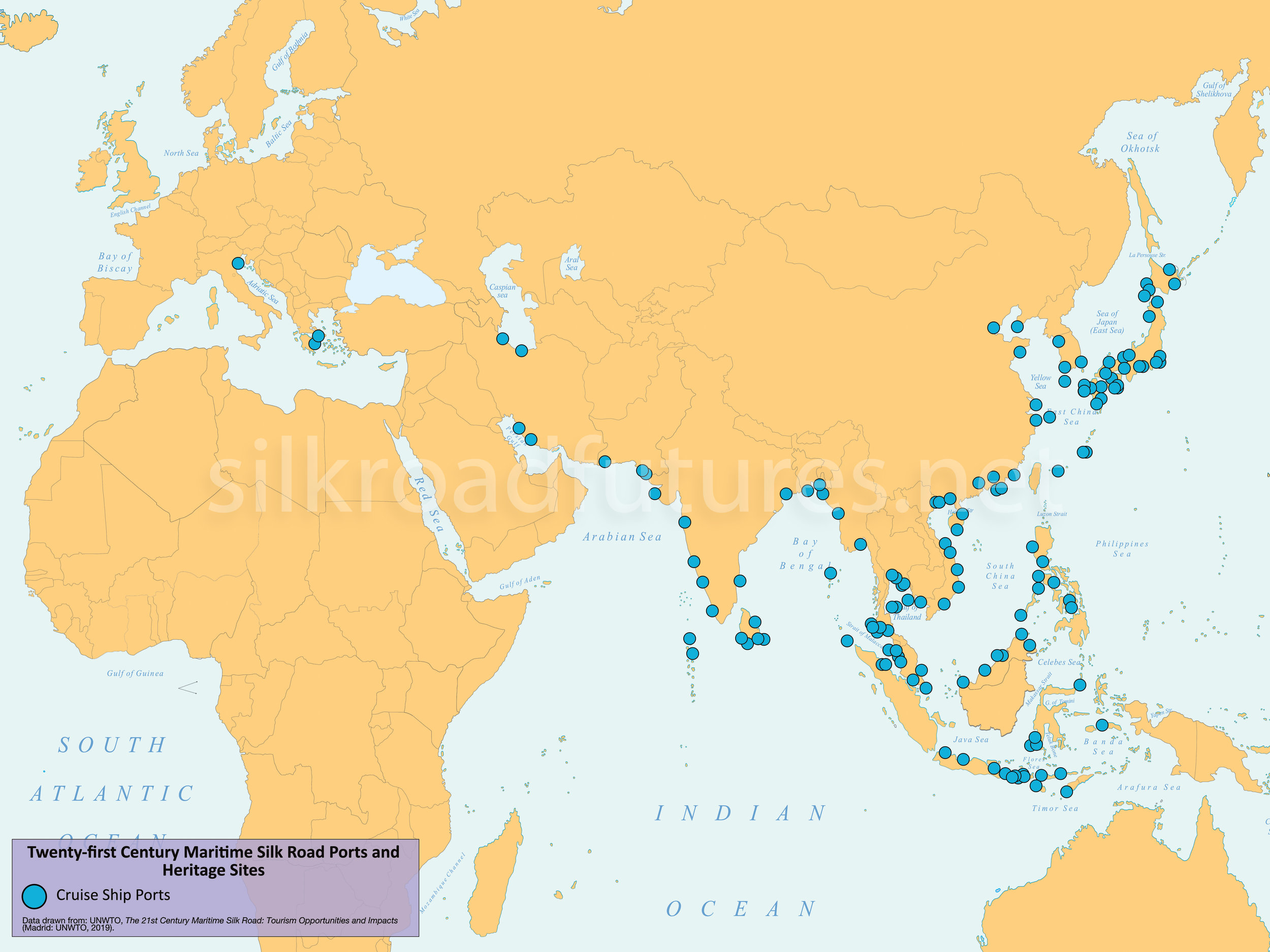Silk Road Cruising
In early 2019, the UNWTO published The 21st Century Maritime Silk Road: Tourism Opportunities and Impacts. The report identifies a range of opportunities - maritime heritage attractions, cruise tourism products and land based services - for locations situated along a “Maritime Silk Road” that stretches right across the East and South China Sea and Indian Ocean regions. It proposes a range of strategies for enhancing regional cooperation and integration, and identifies Belt and Road as a key driver of a fast growing cruise market in the region, particularly in East Asia.
We have extracted the port locations - current and under development - identified in the report, and mapped these alongside the key cultural/heritage sites that are expected to foster growth in this sector.
The environmental and urban impacts of the cruise ship industry have been the focus of international media scrutiny in recent times, as cities such as Dubrovnik and Venice struggle to cope with ever larger ships and increasingly lengthy peak season periods.
Planners, governments and bodies such as the UNWTO need to look to the lessons learned from the Mediterranean. Southeast Asia is ill prepared for a cruise ship sector which saw a 41% global annual increase in passengers 2012 - 2016. In that same period the Chinese cruise ship market alone grew at a staggering 76% per year, reaching 2.1 million passengers by 2016. In 2017 more than 4 million passengers cruised around Asia making 7,200 port calls.
The challenges of the 21st Maritime Silk Road is a key research area at University of Western Australia - to discuss potential research collaborations, please get email or use our contact form.




